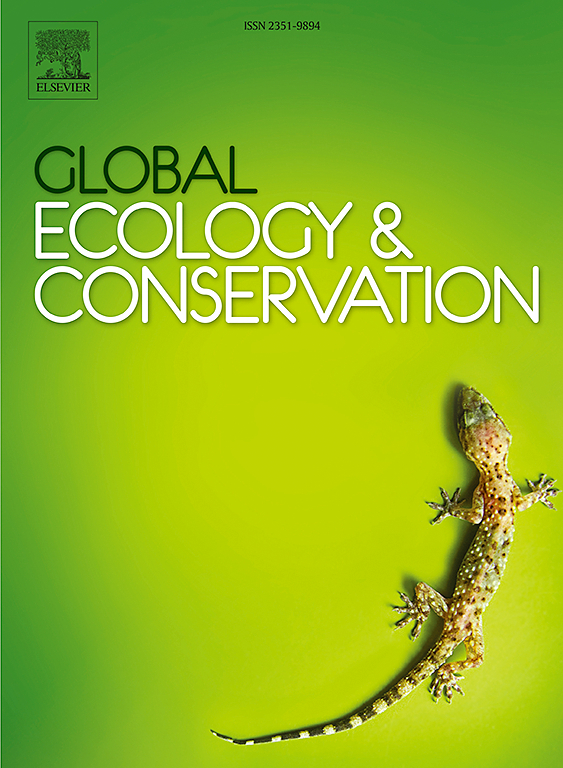Optimal ecological restoration strategy development based on value-cost trade-offs
IF 3.5
2区 环境科学与生态学
Q1 BIODIVERSITY CONSERVATION
引用次数: 0
Abstract
Ecological restoration can provide a holistic and systemic perspective for the implementation of ecosystem protection and restoration projects. However, making decisions on optimal ecological restoration strategies remains a challenge. This study supports strategy development by balancing ecological improvement and economic viability. In this study, we took Huanghua, a county under provincial jurisdiction in China, as an example. We identified areas prioritized for ecological restoration by employing the research paradigm of "sources-resistance surface-corridors-nodes". In addition, we searched for Pareto-optimal solutions using the nondominated sorting genetic algorithm II (NSGA-II) to balance the trade-offs between different objectives. The results of this study revealed that 46 ecological barriers were identified as priority ecological restoration areas in Huanghua, mainly for cropland and construction land. Three optimal ecological restoration strategies with high value![]() cost ratio, high ecological value, and low implementation cost were proposed for typical ecological restoration priority areas for different decision-making needs. Area I has the highest value
cost ratio, high ecological value, and low implementation cost were proposed for typical ecological restoration priority areas for different decision-making needs. Area I has the highest value![]() cost ratio, whereas Area II and Area III have the same value
cost ratio, whereas Area II and Area III have the same value![]() cost ratio, and it is most appropriate to prioritize restoration for Area I. When the investment budget is lower than the implementation cost of ecological restoration, ecological restoration projects with a high value
cost ratio, and it is most appropriate to prioritize restoration for Area I. When the investment budget is lower than the implementation cost of ecological restoration, ecological restoration projects with a high value![]() cost ratio are often chosen. This study constructed a methodological framework for formulating optimal ecological restoration strategies, which effectively enhanced the science of the decision-making process. The results provide a highly valuable scientific basis for developing ecological restoration strategies in Huanghua.
cost ratio are often chosen. This study constructed a methodological framework for formulating optimal ecological restoration strategies, which effectively enhanced the science of the decision-making process. The results provide a highly valuable scientific basis for developing ecological restoration strategies in Huanghua.
求助全文
约1分钟内获得全文
求助全文
来源期刊

Global Ecology and Conservation
Agricultural and Biological Sciences-Ecology, Evolution, Behavior and Systematics
CiteScore
8.10
自引率
5.00%
发文量
346
审稿时长
83 days
期刊介绍:
Global Ecology and Conservation is a peer-reviewed, open-access journal covering all sub-disciplines of ecological and conservation science: from theory to practice, from molecules to ecosystems, from regional to global. The fields covered include: organismal, population, community, and ecosystem ecology; physiological, evolutionary, and behavioral ecology; and conservation science.
 求助内容:
求助内容: 应助结果提醒方式:
应助结果提醒方式:


